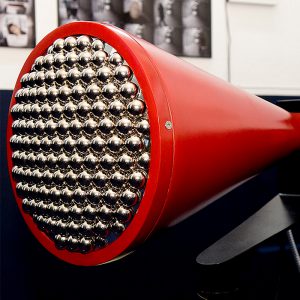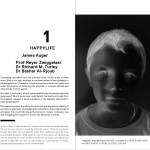
Demonstrating the impact of your work is one of the most important challenges for scientists and engineers in the UK. New funding sources often depend on how successful you are in showing that your work is critical to the UK’s future – for economic growth, healthcare, transport, or another key policy area.
But scientific research has many different kinds of impact and this is not well understood. Sometimes they are deliberate and intended but often they are unexpected and occasionally even surprising.
The UK’s biggest funder of university-based science and engineering is EPSRC and in 2009 they embarked on a project that explored the boundaries between science and society to demonstrate the many different, and sometimes unusual, ways science can have impact. They worked in partnership with the Department for Design Interactions at the Royal College of Art to develop a project that would run for over a year and bring an entire cohort of the RCA’s postgraduates into contact with research groups all across the UK. The initiative was devised and chaired by Matter PR’s Managing Director David Reid and managed by Dr. Helen Bailey from EPSRC. Funding came from EPSRC and through a grant from NESTA.
16 different collaborations between EPSRC research groups and RCA designers were created. In each, the designers spent up to a year developing a relationship with the research team, learning about their work, and exploring the boundaries between their work and society. The project tried to work with as few limits as possible and allowed each collaboration the freedom to go wherever the team’s interests led.
To increase involvement and generate interest in the project as the collaborations developed, they created an interactive community website on Ning to share ideas, progress, and news. And a champion for the ‘Impact!’ project was found in Robert Winston, a leading science communicator who is also a passionate advocate for the arts.
The results were surprising and have since led to many other interesting projects and collaborations. The main deliverable was the Impact! Exhibition at the Royal College of Art from 16-21 March 2010. Attracting over 1200 visitors, it featured a collection of sixteen original design installations. They aimed not to offer prediction, but to ask questions and inspire debate into how today’s research might transform the world. The research included in the exhibition ranged from renewable energy devices and security technologies to merging fields of synthetic biology and quantum computing. The exhibition catalogue was designed by Kellenberger–White and contains a full summary of all the projects and the thinking behind them.
One of the projects, The 5th Dimensional Camera, brought the Superflux design team Anab Jain and Jon Arden together with quantum information processing experts Professor Andrew Briggs from the University of Oxford and Professor John Rarity from the University of Bristol. It explored the impact that could be created by a quantum computer in the future.
The 5th Dimensional Camera is a fictional device that captures glimpses of parallel universes suggested by quantum physics. It asks questions such as: How might we seek to interact with these other worlds? Would we become jealous of our parallel selves? What would happen to our sense of morality if we knew that we had committed inconceivable acts in another world?
You can explore all the Impact! Exhibition projects on the RCA’s design portfolio. Just click on ‘projects’ and look at those with an ‘IMPACT’ prefix. The work also went on tour and an ‘Impact! Gallery’ featured at the Cheltenham Science Festival in 2010 and some became window installations for the Wellcome Trust on Euston Road.
Outcomes & results
This project had a huge impact on the people involved with it as well as those who visited the exhibition. In total, it reached well over 20,000 people and provoked them to think more deeply about the influence science has on our daily lives and what it could mean in the future. It also broke through the noise of impact reports and case study leaflets and made government ministers and senior officials (many of whom visited) think about the many different kinds of impact science can lead to.
Perhaps more importantly, the researchers involved reported that it helped them look at both ‘impact’ and their own research in a totally new way and consider things they had never thought of before. The designers had an experience of science which was unparalleled and today many are still using their experience in their work around the world.

